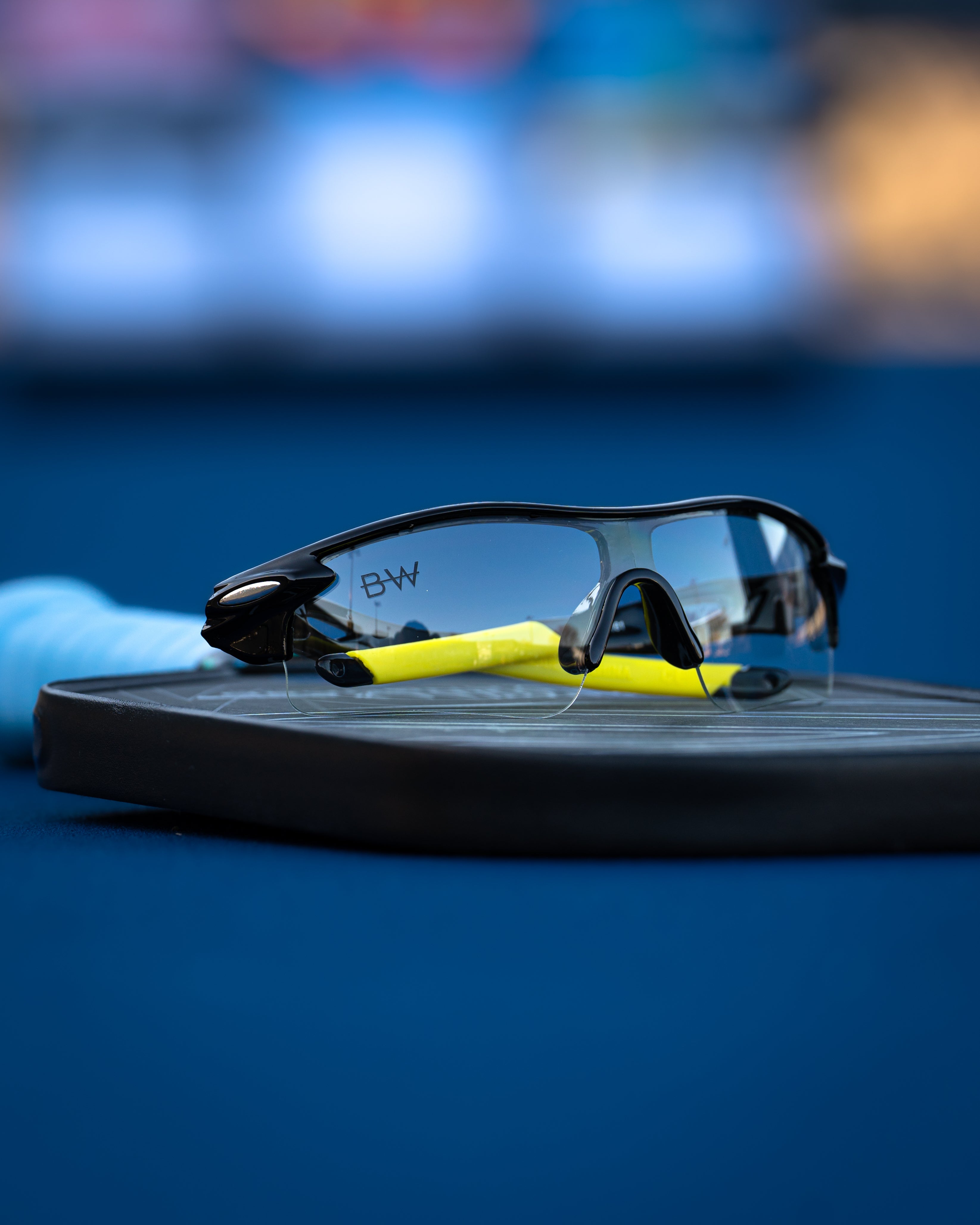How Contrast Sensitivity Affects Shot Accuracy
Share
How Contrast Sensitivity Affects Shot Accuracy
Whether you're playing outdoor pickleball, indoor volleyball, or fast-paced racquetball, how accurately you place your shots depends on more than muscle memory. Your vision — and specifically your contrast sensitivity — plays a crucial role in your ability to hit with precision.
Unlike visual acuity (which measures how clearly you see), contrast sensitivity is your ability to distinguish objects from their background. For athletes, that means seeing a ball against a court, a paddle against a net, or a line across a sunlit surface.
At Blinded Wear, our prescription sports glasses are designed not just to sharpen your vision, but to elevate your contrast perception — helping you track, aim, and react with greater precision across any playing surface.
What Is Contrast Sensitivity?
Contrast sensitivity refers to how well your eyes can detect differences between shades of light and dark — especially in low-contrast environments.
For example, spotting a gray ball on a cloudy court, or tracking a serve in dim indoor lighting, both challenge your contrast detection more than your basic eyesight.
High contrast sensitivity allows you to:
- Track objects in motion — like a ball passing over a net
- React quickly to changes in depth — like bounce height or paddle angle
- Place shots more precisely — especially on tight lines or during net play
Why It Matters for Shot Accuracy
When your brain receives high-contrast input from your eyes, it can make faster, more accurate judgments about:
- Ball spin
- Opponents' paddle positions
- Court boundaries
- Lighting changes
This visual clarity affects every stroke — whether you're delivering a forehand winner or trying to reset a low ball. In real-time sports, even slight delays in contrast processing can throw off shot placement.
That's why athletes with updated, contrast-optimized RX lenses see measurable improvements in consistency, depth judgment, and directional accuracy.
How RX Lenses Help Enhance Contrast Sensitivity
Prescription lenses do more than just make your vision “clear.” When built for sport, they’re engineered to enhance visual input at every level — including contrast response.
At Blinded Wear, every RX lens is crafted from 1.61 high-index material, which offers:
- Superior edge-to-edge clarity
- Minimal light distortion
- Consistent tint or clear lens transmission
All of this helps your brain process visual detail faster and more accurately, especially in real-time scenarios where contrast matters most.
Explore the Blue Shield RX and Steel Ice RX — both engineered for peak contrast performance.
Best Lens Tints for Contrast
Different environments require different contrast strategies. Here's how each Blinded Wear lens option performs:
1. Clear Lenses
Ideal for night drills or indoor training under controlled lighting. Our clear RX lenses offer no distortion, full contrast, and reduced glare, giving you sharp visuals without added tint.
2. Grey Lenses
Grey lenses block light evenly without altering color — ideal for sunny conditions where color fidelity and depth tracking matter. These lenses help you lock in on the ball without over-saturation or washout.
Check out the Red Shine RX or Leathered RX.
3. Transitional Lenses
Transitional lenses adapt to UV light, gradually shifting between clear and tinted states. They’re ideal for changing light conditions — early morning matches, sunset play, or cloud-to-sun transitions — when contrast conditions shift mid-rally.
Try the Havana Melt RX or Zebra II RX.
What Happens When Contrast Sensitivity Declines
Even athletes with “20/20” vision can struggle with poor contrast sensitivity — and the effects often show up as:
- Missed shots in low or uneven light
- Difficulty judging bounce height or spin
- Overcorrections on directional shots
- Eye fatigue during long matches
If you find yourself second-guessing your aim or adjusting late in rallies, your contrast response may be lagging — and the right RX lenses can fix that fast.
RX Glasses That Help Train Visual Contrast Over Time
Like reflexes or footwork, your contrast perception can improve with the right gear. The more time you spend wearing high-performance RX glasses in sport-specific drills, the more efficiently your brain adapts to contrast challenges.
Wearing your Blinded Wear RX glasses during:
- Warmups
- Rally simulations
- Shadow drills and footwork training
allows your neural visual system to learn how to process contrast under pressure — giving you a major edge on game day.
Learn more in: How RX Glasses Train Your Brain to Read the Court Faster.
Top RX Pairs for Contrast-Driven Accuracy
- Blue Shield RX – Wide viewing angles for tracking and placement
- Steel Ice RX – Secure fit and clarity under pressure
- Red Shine RX – Bright-day accuracy without squinting
- Zebra II RX – For sunrise/sunset matches with shifting contrast
Related Reads
FAQ: Contrast and RX Performance
Can RX glasses improve my shot accuracy?
Yes — especially when built for high contrast sensitivity. They help your brain process visual input faster and aim more precisely.
Which lens tint is best for contrast?
It depends on lighting. Clear for low light, grey for sun, and transitional for changing conditions. All Blinded Wear lenses preserve contrast across prescriptions.
What if I already have 20/20 vision?
You may still have contrast issues. Many athletes with “perfect” vision benefit from RX lenses that sharpen contrast and depth perception.
Conclusion: Upgrade Your Visual Input, Elevate Your Accuracy
Contrast sensitivity is one of the most overlooked tools in sports performance — but it directly impacts your shot accuracy, consistency, and confidence. When your vision is sharp and your contrast detection is fast, your brain makes better decisions and your game elevates.
Blinded Wear RX glasses are designed to maximize visual performance — with 1.61 lenses, sport-ready frames, and optimized contrast for real-world conditions.
Shop RX Sports Glasses now and gain the visual edge you need to land every shot with confidence.
